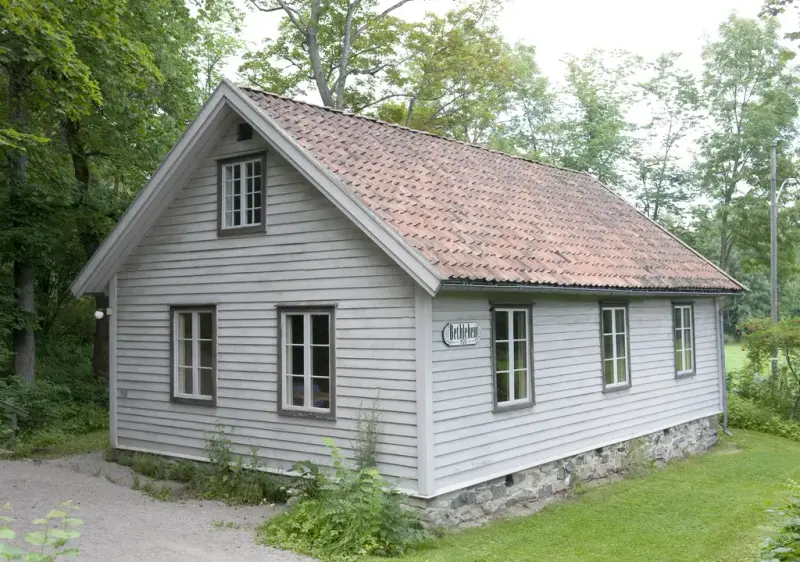In some regions of the country, revival movements within the established church were of greatest importance, in other regions it was those outside the church – the so-called dissenters – who won great¬est support.
The spiritual identity of thousands of Norwegians is linked to the meet¬ing house, whether it was called Bethlehem, Betel or Betania. The countless meetings, bazaars and after- Christmas parties arranged there live on in the memories of generations of children and young people.
 Anne-Lise Reinsfelt | Norsk Folkemuseum
Anne-Lise Reinsfelt | Norsk Folkemuseum The Bethlehem meeting house from Hinna (Stavanger, 1876)
The pastor of Stavanger, Lars Oftedal, was actively involved in the raising of the meeting house. This was a result of the district’s intense Christian revival movement of the 1860s and 1870s. Oftedal, a former evangelist, saw the need for a place of worship for his parishioners. Thanks to the tireless voluntary work of local women and men, the Bethlehem Meeting House was ready for dedication on 23 March 1876.
Its statutes decreed that Bethlehem was to be a Christian meeting house, but its board never adopted a restricted religious limit to the scope of their activities. In 1913, the meeting house was dedicated for clerical acts and functioned as a church between 1913 and 1967. Its parishioners bade a sad farewell to Bethlehem at a special meeting in August 1973. The process of moving it started immediately afterwards. The meeting house has been restored at the museum to its original form and colors.